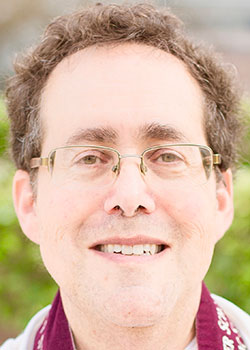The rabbis of the Talmud and Midrash were very sensitive readers of Torah. After all, they studied these sacred words day and night, always seeking new interpretations, novel implications of our special love relationship with God. In the process of their studies, they uncovered nuances and insights that can continue to guide us, their descendents, on a path of righteous and holy living.
One of their remarkable insights was to notice the unusual wording found in Parashat Tzav. In speaking of a series of sacrifices to be offered on the Altar in the Mishkan, the Tabernacle, the Torah says, "This is the torah of burnt offerings…” Why, they wondered, did God use the word "torah" which means teaching or instruction, rather than just saying the more expected "these are the rules…?" Surely there must be some deeper lesson here, some significance that is worthy of consideration?
In the Talmud (Tractate Menahot), the sage Resh Lakish asks the same question: "Why does the Torah say, 'This is the torah of burnt offerings? In order to teach that if someone studies the laws of an offering it is as though they had actually offered the sacrifice themselves."
Resh Lakish offers a remarkable notion: that study is vicarious action, that reading about something with sufficient imagination and identification constitutes doing it. Upon that idea, the power of the mind to create images that are as forceful as life itself, the entire enterprise of Judaism stands and thrives.
Think for a moment about some particularly vivid dream or fantasy you have. Now think back to a distant memory. Does one seem more real or vivid than the other? Chances are good that your recurrent fantasy feels a lot like a memory, that a particularly captivating scene from a movie assumes the same contours as some event you actually lived through. Perhaps one of the key characteristics of a human being is our ability to use imagination and fantasy to extend our experiences beyond the limits of our own bodies, our own vision, and our own knowledge. Through the use of our minds, through the integration of reading, of art, and of conversation, we expand to encounter people long dead, places we've never been to, and ideas that other people have thought and articulated.
That ability to transmit abstract ideas, to cultivate belonging to a community that transcends time and place, that sustains values and virtues developed as a timeless gift, is a key human function, perhaps our most Godlike trait.
Judaism recognizes the power and the necessity of cultivated imagination and of projected identification. To be able to make a fantasy live requires the ability to identify with its characters, to place oneself amidst its action, and to grow in exposure to its values. Far more than simply the memorization of facts or the repetition of concepts, this kind of transforming learning can take place only with the right creativity, sympathy, and receptivity.
That kind of learning is talmud torah, study in which the object of study is learned not simply as a matter of satisfying curiosity or expanding skill (although talmud torah can certainly do both). But the primary factor that transforms normal learning into talmud torah is that we approach whatever it is we study for its capacity to teach us something about God, something about what it is God wants from us, something about God's creation, or something about our partnership in the establishment of God's sovereignty.
When we study the Torah simply as an interesting document from the Ancient Near East, then even the study of Torah becomes merely academic learning. But when we study even the functioning of an automobile engine or read a good comic as an expression of God's bounty in the world or of the Godlike capacity of the human soul to create and to touch another soul, then even the Sunday funnies can be a source of talmud torah. Talmud torah is not what we study, but how we study.
Ha-Shamayim m'saprim k'vod El, the heavens declare the glory of God. Looking at the sky with the proper kavvanah/intention) can reveal something significant about God and creation, about what it means to be a person and a Jew. The special trick of rabbinic Judaism is to teach us to see all things as a sacred text, waiting to be read and studied in our constant search for God and for holiness.
And in that search, there is no finer tool than the sacred writings of the Jewish People throughout the ages. Trained in spiritual openness, rooted in a culture that translated God's will into living words, the sages, prophets, poets, and philosophers compiled a library of insight, profundity, elevation, and exultation.
And when we study their words, when we engage in talmud torah, thereby making their words our own, then it is as though we ourselves performed the sacrifices with a whole heart, as though we ourselves split the sea, received the Torah, or sat in the Great Sanhedrin.
Through the miracle of talmud torah, we transcend any one age or place, making ourselves one with eternity and everywhere, binding ourselves—in fact—with the One who invites us to participate in thinking the thoughts of the Divine.
Shabbat Shalom!

